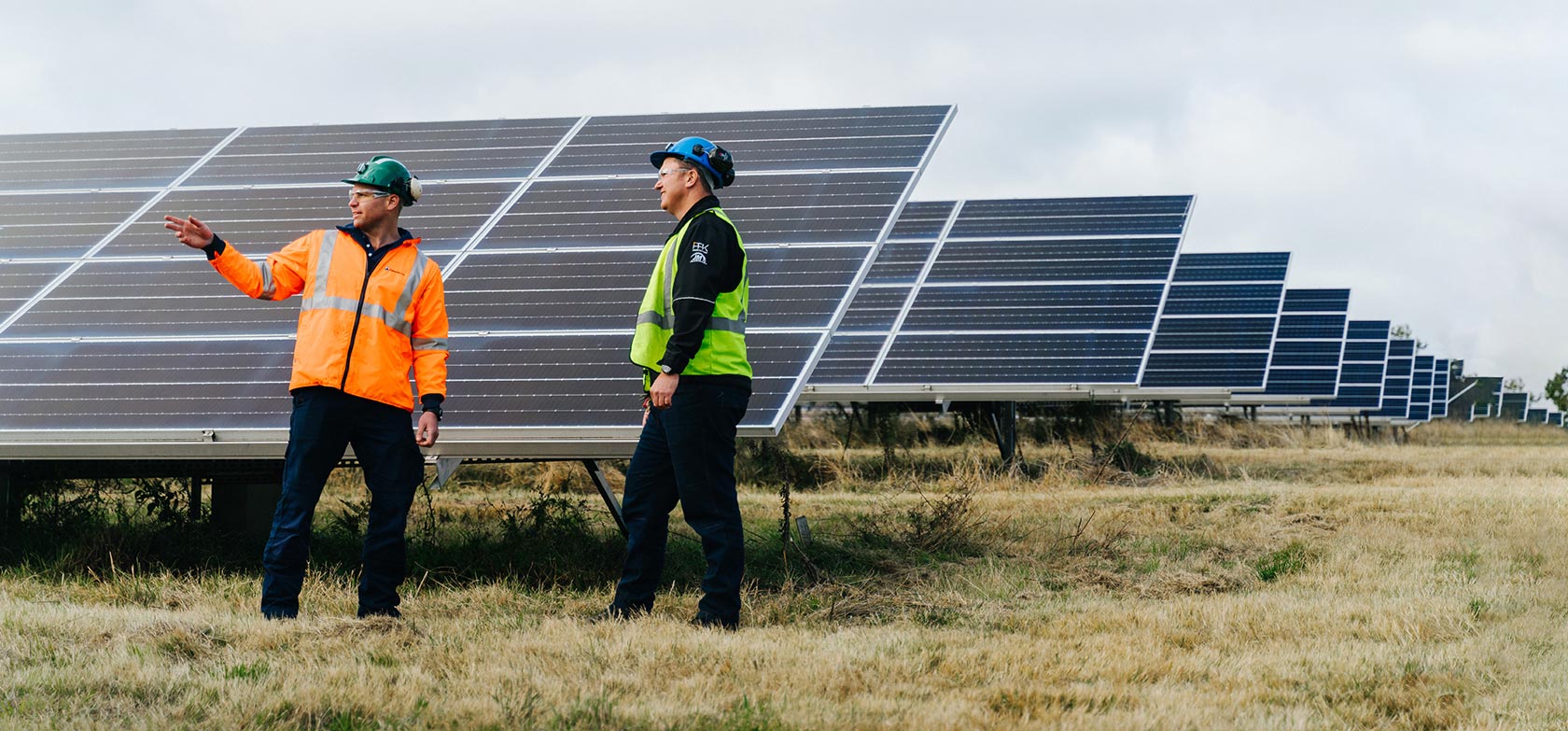

Environmental Management
The NSW mining industry values the environment. Our member companies work hard to minimise the impact of mining on the air, land, water resources and biodiversity.
Mining is heavily regulated in NSW with strict rules about how we manage the land, minimise impacts during mining and rehabilitate the land after mining is complete.
Our industry works with Indigenous, environmental and community groups, including through the Upper Hunter Mining Dialogue, to integrate local knowledge into our mine plans and operations and support a productive working relationship between our industry and the community.
Land
Actual mining operations use 0.12 percent of NSW’s land area but generate a significant amount of jobs and economic activity from this land use. For comparison, agriculture uses 79.71 percent of NSW’s land, while nature conservation accounts for 9.18 percent (ACLUMP, 2020)
While mining operations use a small proportion of NSW’s land, the potential impacts of mining on land, including biodiversity and agricultural areas, are a crucial component of the assessment process for mining projects.
There are specific regulations that require proposed mining operations to prepare Agricultural Impact Statements so that the quality and value of agricultural land in the area is comprehensively understood and that any potential impacts are minimised.
Similarly, the potential impacts on biodiversity are assessed in detail, with flora and fauna surveys undertaken to identify local plant and animal communities. Potential impacts of mining need to be avoided or minimised, with residual impacts offset through the NSW Biodiversity Offset Scheme.
Mined land is rehabilitated progressively throughout the life of the mine and is restored to a variety of land uses such as cattle grazing, conservation land as well as commercial and industrial uses.
Air
Like many other industries, mine sites generate dust through activities such as bulldozing and excavating rock and soil, blasting activities and through haul trucks and other vehicles travelling on unsealed roads. Windy conditions can also stir up dust from exposed areas of rock or soil.
The mining industry continues to improve the way it is managing these work processes to minimise the dust that is generated by mining operations.
NSW Health has prepared a fact sheet called ‘Mine Dust and You’, to explain the type of dust that is generated from mine sites and the potential risks from mine dust to health.
Mines are one of many sources of dust and other particulates in the air that we breathe. Other sources include agriculture, bushfires, wood-fired heaters, power stations, cars and other vehicles and sea spray from the ocean. In the Upper Hunter, a 2012 CSIRO study found that domestic wood heaters were the primary source of fine particulate pollution in the region – the smallest particles of greatest health concern.
Because of their potential health impacts, governments set air quality standards and establish regulatory frameworks to help minimise the level of dust and other particulates in the air. Mines are required to carry out activities in a manner that will minimise the generation and emission of dust.
Mines have air quality management plans in place to reduce the levels of dust they generate.
Mining operations are planned and conducted to minimise disturbed areas and progressively rehabilitate mined areas; stockpiles are sprayed with water, and water carts keep unpaved roads damp so that dust generation is kept to a minimum.
Mines use weather forecasting systems to determine when weather conditions are going to contribute to dust generation so they can modify their operations accordingly. For example, if mining operations can forecast that it is going to be a windy day, they will move operations into deeper areas of an open-cut mine pit to avoid producing dust at height that can be blown off-site and impact nearby neighbours.
Other technology solutions like drones are being used to minimise dust and other impacts from blasting operations.
Local mining communities in NSW have access to some of the most comprehensive air quality information in Australia. For example, the mining and power generation industries have funded the installation and ongoing operation of the Upper Hunter Air Quality Monitoring Network, which has fourteen air quality monitoring stations established across the Upper Hunter region. The monitoring sites are operated independently by the NSW Environment Protection Authority, and real-time data is available to the public.
Potential dust generation from coal trains moving coal from our mines to our ports, such as the Port of Newcastle, has also been a topic of discussion with local communities. While the available evidence indicates that coal trains are not a significant source of dust, the NSW Environmental Protection Authority has undertaken a range of research initiatives and actions to minimise pollution from coal train dust. The Hunter Valley coal industry has also done a range of work to manage coal train dust.
Water
Water is a vital and valued resource for our community, our environment and for homes and businesses across NSW. While water is essential for mining operations, NSW mines only use around 1.5% of the state’s water (ABS Water Account) and every drop is used as efficiently as possible.
Mines need water for ore and coal processing, dust suppression, staff amenities and in some cases irrigation to help establish new vegetation or support agricultural activities on surrounding land owned by a mine. For some of these activities, such as dust suppression, poorer quality water can be used, which helps conserve higher quality water for other uses.
Mines can source water from rivers, groundwater aquifers, rainfall, water recycled on-site, recycled town effluent, potable water supply or water supplied by a third party, such as another mine. Preference is always given to poorer quality water where it is available and can be used, or water captured on-site so that the need to extract water from rivers or groundwater aquifers that may be used by other residents or industries is minimised.
Mines must be licensed for any water they take from rivers or groundwater aquifers, just like other water users. Extensive monitoring is undertaken within and around each mine to continually assess water quality, stream flows and groundwater levels to ensure any impacts of the mine are within predicted and approved levels. Read more about the rules and regulations around water licensing in the NSW Aquifer Interference Policy.
Where mines have excess water that cannot be stored or used on-site, there are strict rules around the volume and quality of water that can be released into nearby streams. Several mines have water treatment plants in place to ensure water is high quality before it is discharged.
In the Hunter Valley, the Hunter River Salinity Trading Scheme is an innovative market-based scheme that controls discharges of saline water into the Hunter River by mines and power stations. The scheme has been successful in reducing salinity levels in the Hunter River for many years and ensures water quality is suitable for all water users.
Noise
Mines can generate noise from processing plants, blasting activities, and mobile equipment and machinery operations like trucks and dozers.
Mines in NSW have comprehensive noise management plans to keep any disruptions to neighbours and the community to a minimum. There are more stringent noise requirements at nighttime and some activities, such as blasting, can only be undertaken during certain times of the day and week.
Mines in NSW are tightly regulated for noise against standards adopted by the NSW Environment Protection Authority and outlined in its Noise Policy for Industry.
Where a mine has taken all steps to reduce noise but noise levels still exceed certain criteria, NSW Government policies require mines to install noise mitigation at affected households, or in some cases, if requested by the landowner, the mine must purchase the affected property. This would usually occur as part of the planning and independent assessment process for a new mine or an extension to an existing mine.
Details of these requirements are outlined in the NSW Government’s Voluntary Land Acquisition and Mitigation Policy.
Blast Management Plans, based on Environment Protection Authority guidelines, outline management and monitoring methods to minimise blasting impacts.
Subsidence
Underground coal mining is usually undertaken at significant depths. This limits impacts on the surface, which is protected by layers of rock and strata.
However, mining underground can cause the ground above to move, in what is known as mine subsidence. This can be unnoticeable, however, in some cases, there can be visible effects at the surface.
The potential safety and environmental impacts of mine subsidence are tightly regulated in NSW. Subsidence movements and impacts are predicted before mining begins, and are only approved if the Government believes impacts can be minimised or kept to acceptable levels.
Mining operators often take steps to minimise the potential impacts of underground mining, including varying the extraction width of coal, avoiding mining near sensitive features, or changing the layout of the mine. In other cases, the impacts of mine subsidence can be repaired or rehabilitated once mining is complete.
Subsidence Advisory NSW provides compensation or repair services where properties, such as houses, are damaged by coal mine subsidence. While Subsidence Advisory NSW conducts urgent or emergency works, repair liabilities for active mining lie with the company that is conducting the mining. Companies undertaking underground mining in these locations take their obligation to the environment and nearby neighbours very seriously.

The NSW Minerals Council acknowledges that sustained global action is required to reduce the risks of human-induced climate change.
The NSW Minerals Council supports a measured transition to a net-zero emissions global economy and Australia’s participation in global agreements, including the United Nations Framework Convention on Climate Change.
The NSW Minerals Council supports the NSW Government and Australian Government target of reaching net-zero emissions by 2050.

NSW Minerals Council tyre recycling register
The NSW Minerals Council has commissioned AECOM to develop a register of businesses that offer services to recycle off-the-road mining tyres.
It is available for download in Microsoft Excel format below.
The register will be updated every 6 months.
